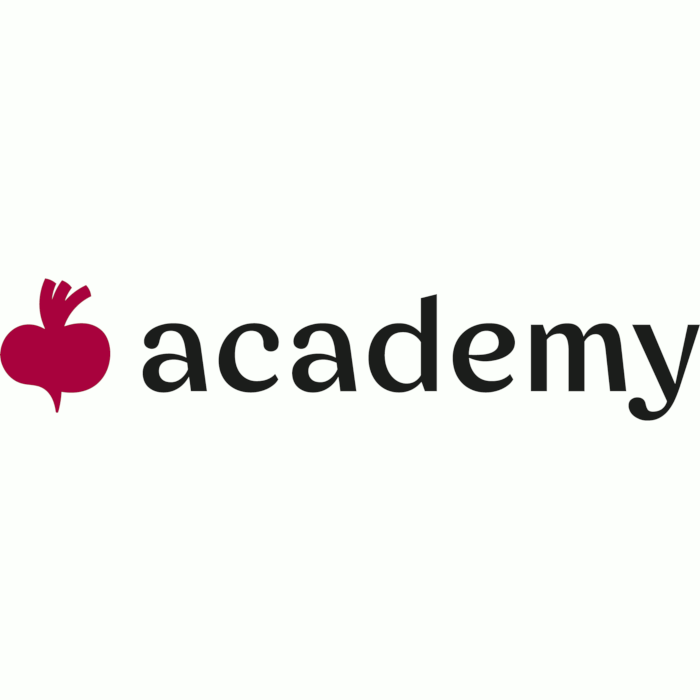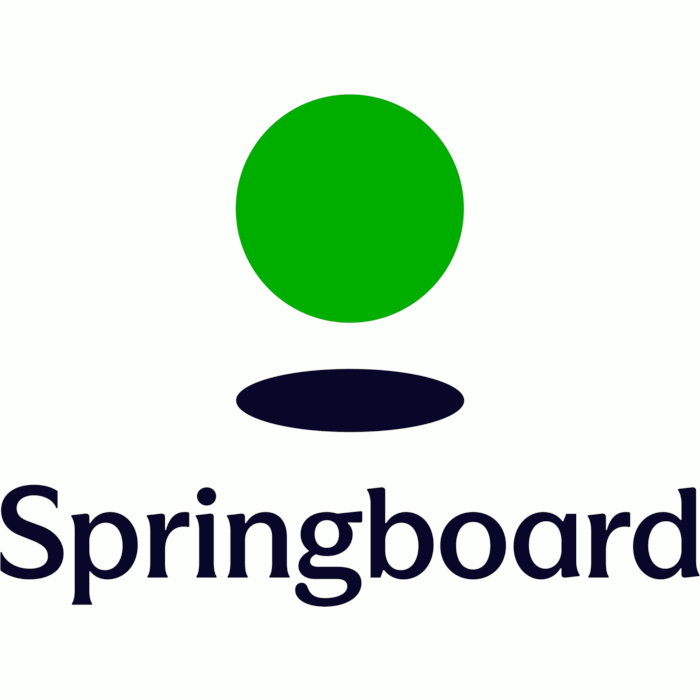There are currently no reviews. Be the first!
About Beetroot Academy
Location:
Beetroot Academy is a Swedish-Ukrainian EdTech company on a mission to help people around the globe have great careers in the digital economy. Providing affordable education with industry experts in live classes, we've trained over 12 000 tech specialists... Read More and built a network of 300+ hiring partners since 2014. Beetroot Academy is a social enterprise and a part of the impact-driven Beetroot Ecosystem that consists of a tech company, thousands of alumni, and a wide network of partners.
Read LessDo you represent this school? Suggest edits.
Courses
Advanced JavaScript / React
If you already work with JavaScript, it’s time for React/Redux. The React JS library solves problems connected with interfaces: goods in the basket, lists of users. When more and more pages appear, you can use Redux.
After finishing the course you will know React tools such as: ESLint — for code syntax check, React Router v4 — for creating menus and pagination, Reselect — for optimizing the operation of states, Immutable.js — a library that helps to create immutable data collections, Jest — for testing. You will learn to create functional components using React hooks. And you will be able to write unit-tests, using Jest and react-testing-libraries. As a result, you will create your own application and will be able to work as a React developer. The online test is not provided on this course. You will get a test task after an interview.
Required
- HTML, CSS
- Preprocessor: SASS
- Data types, syntax,basic JavaScript structure and functions
- Work with DOM
- Event model in JavaScript
- Work with AJAX requests within JavaScript.
Why Advanced JavaScript?
- The entry threshold to React/Redux is quite high. If you learn this technology, you will be considered an excellent JS developer
- Besides web-development, JS can be used as a server language and you can create desktop applications
- Using React you can code as Facebook, Instagram. AirBnb developers. You can be sure that this technology will not lose it’s popularity. By the way, we also use JS in our website coding
- After you learn one JS library, the others will be easier
- If you know React you can learn React Native and develop gadget applications.
Redux, React.js, JavaScript, React Native
Front-End Development
Front-End Developers are the blood of the IT industry. They are the final link of the chain connecting businesses and users online. Front-End refers to the visible part of the website/application. Essentially, Front-End developers make sure the user interface design renders and responds properly—to lead users toward website functionality defined by User Experience Designer and powered by Back-End Developers. In many ways, you make or break the initial impression of a product.
Our curriculum covers the trifecta of front-end development tools: HTML (defines the layout), CSS (the look), Javascript (interactivity). We will also help you minimize the routine with automation tools, such as Gulp. The Javascript module also touches upon Javascript frameworks, which make mobile applications and websites blazing fast. Their beauty lies in universal adoption: hobbyists and IT giants use the same tools.
The course is practice-oriented so that our graduates have a portfolio of websites and apps they can proudly show to their future employer. Our flipped classroom approach means learning theory at your own pace with little to no time spend on it during live classes. We cultivate a peer environment where students collaborate a lot and can always rely on the teacher to help them out, in and outside of the virtual classroom.
Required
- Solid computer literacy
- Laptop or desktop computer
- Coding experience is an advantage
Career Prospects
- Full-time Front-End Developer at a company with own website and application
- Front-End specialist for an IT outsourcing agency
- Freelance Web Developer with flexible schedule and freedom to pick your client
- All options enable growth from Junior to Lead developer, increasing your value each step of the way
CSS, HTML, JavaScript, Front-End Web Development
Intro to Tech Careers
Get to know the five essential tech careers and figure out which one is right for you. Theory and practice of Project management, UI / UX design, QA manual, Front-end and Python development will help you understand which direction fits you. You will have free access to the course materials, get an idea of each of the five professions, and be able to choose the path of a new career. Study at a time convenient for you and free of charge, with the only purpose — to understand which job to study in-depth.
Project Management in IT
Not everyone in software development companies needs to develop software. Helping others do that is an important duty, and it usually goes to the Project Manager.
These days, software development is broken down into five phases. These are initiation, requirement gathering, planning, implementation, and maintenance. Although the project manager primarily interacts with developers, they are also responsible for defining the scope of the project with the client and conveying the developer's successes and hurdles. This is a very rewarding job that happens to require the least hard technical skills.
Our course covers the Waterfall and Agile software development philosophy with, just like the industry, heavier emphasis on Agile. We then move on to Scrum, a key methodology of applying the Agile philosophy to real-life projects. Roughly 1/3 of the course is allocated to soft skills so that you are comfortable working with your team and external stakeholders. Last but not least, we teach you the industry-standard project management tools, such as JIRA and Trello.
Required
- Laptop or desktop computer
Project Management, Agile
Python for Beginners
Python is an interpreted programming language. The program is written in text form, which means that you can immediately run it and see the result. We will teach you the basics of programming and explain how to use frameworks. You will work with standard and popular extended libraries, the main algorithms, and data structures. You will learn the basics of working with networking and the web, as well as OOP programming concepts. You’re also going to get acquainted with the systems development life cycle and understand how to use pip, virtualenv, and git.
After completing the course, you’ll be able to write simple apps and programs in Python by either designing from scratch or extending an existing codebase. You will be able to test, refactor, and optimize the code. Python is like a medical university—we give you the basic schooling, and you get to choose the internship training to continue with.
Required
- General understanding of what makes a computer: hardware (СPU, RAM), OS, file system
- General idea about Python
- Having a laptop
Why Python?
- This language has been used by Google, Facebook, Yahoo, NASA, Red Hat, IBM, Instagram, Dropbox, Pinterest, Quora
- A developer's time is money – Python saves you time when coding
- With Python, it’s possible to quickly create a game or an app prototype and understand if the program works right away
- Getting started with Python will unlock Machine Learning, Data Science, Big Data, Back End, DevOps, and system administration as further options
- Python is easy to learn since the syntax resembles regular English, all while the language can be used for complex programs and solutions.
Git, Python, Object Oriented Programming (OOP)
QA Manual
You don’t necessarily need to write code to start a tech career — you can check it instead. The quality of a product and the success of the team lie on the shoulders of the tester. If you enjoy evaluating a product as a whole, you have critical thinking skills, and you’d like to fix errors — we’ve got a course for you. That is QA manual. Even without any technical training, you will acquire the necessary knowledge about the QA profession.
Software Testing, A/B Testing
UI/UX Design from scratch
As a UI/UX Designer, you are what people see and what they can do with websites and applications. The job has two distinctive specializations in it, which companies have increasingly preferred to see in the same person.
User Experience design concerns the flow of a product: what people can do with the app/website and how they go about gettings things done. Ordering a taxi with ride-sharing apps is generally a simple and good user experience, while canceling a subscription service (especially during a trial period) often isn't. User Interface design is about what users see on their screen, and it's not just about the art. A good specialist can create the right associations with a color palette and shapes, while a mediocre one can make things very confusing with poor icon choice alone.
Our course covers design fundamentals (color, composition, typography), nuances of digital design (i.e. creating the same website for desktop and mobile), and modern tools. We primarily focus on Figma as the latest and biggest tool for both user experience and user interface design. It also comes with a ton of features that make collaborating around designs easier for the whole team. Figma runs on any device with access to the internet, so a Macbook is no longer a requirement for web designers. We also have a crash module in Adobe Photoshop so you can create new design assets and make advanced tweaks to the existing ones.
Beetroot Academy utilizes the flipped classroom strategy, which carries a heavy focus on practice for live classes. Our students go through theory between classes and come prepared to beef up their design portfolios. We make sure graduates have a solid number of apps and websites to back up job applications. Our teachers promote collaborative learning in the virtual classroom and beyond.
Required
- Basic computer skills
- Laptop or desktop computer
UI Design, UX Design









